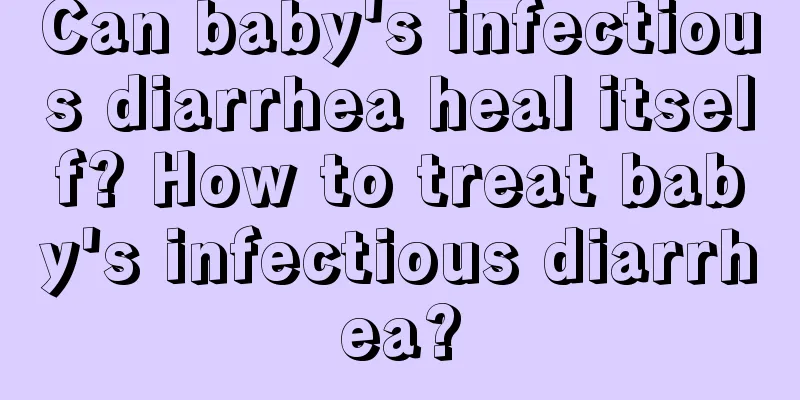Can babies bring milk powder on the plane?

|
Many first-time parents don’t know some of the things to note when taking their babies on an airplane. So, can babies bring milk powder on an airplane? Can babies bring milk powder on the plane?Of course you can. Except for some prohibited items, liquid items cannot be carried on the plane due to flight factors. However, baby milk powder can be brought, so mothers can rest assured. Hot water will also be provided on the plane. What should babies aged 6 to 7 months pay attention to when flying?If you want to fly with your baby, parents should first understand some of the rules for children flying! Airlines stipulate that only babies who are over 14 days old and in good health can fly. Because the lungs of newborns have not yet fully opened, the capillaries are fragile, and the body has a weak tolerance to changes in air pressure, gravity and other factors, newborns within 14 days should not fly. It is best to wait until the baby is 4 to 6 weeks old before taking him on a flight. At the same time, parents should also pay attention to not letting the baby eat too much before boarding the plane, and make sure there are no fever symptoms, and the nasal cavity must be unobstructed. 1. Don't try to prevent aerotitis media by stuffing paper balls or cotton into your child's ears. This is actually futile. 2. Feed your baby milk or give him snacks during takeoff and landing so that he can swallow fully. 3. Crying helps open the baby's Eustachian tube, so there is no need to stop it. 4. Do not let your baby sleep when the plane takes off or lands, because the possibility of barotrauma to the eardrum during sleep will greatly increase. 5. If your baby has a cold, you should postpone the trip because a cold can cause blockage of the Eustachian tube. When the plane takes off and lands, the air pressure changes, causing imbalance in the air pressure inside and outside the ear and sinuses, which can easily lead to pressure injuries of the eardrum and sinuses. Air pressure will inevitably cause ear pain in some babies. The best way to relieve your baby's discomfort on the plane is to let him suck on a pacifier or drink water from a bottle, using sucking to balance the air pressure inside and outside the tube. If you forget to bring a pacifier before going out, you can also let your child put a piece of candy in his mouth or drink something, which can also relieve discomfort. Older babies can also be asked to chew on the snacks provided on the plane, the purpose of which is to swallow and reduce discomfort. A series of actions during the flight from takeoff to turbulence, climbing, descending, turning, and landing may cause airsickness in babies. The baby's physical discomfort and fatigue before boarding the plane may also cause airsickness. What should I feed my baby when I take him/her on a plane?Be sure to bring bottles and milk powder for your baby. It is best to bring two bottles, one for water and one for milk. Otherwise, it is not very convenient to wash the bottles on the plane. However, it is best not to prepare the milk powder in advance, because it may be a bit troublesome to go through security checks. Generally, they will not pour it out, but they will just open it to check it out, which is not very good. It is best to separate the milk powder with milk powder boxes. You can ask the flight attendant to add warm water for you on the plane. If mothers do not bring milk powder, general flights will be equipped with backup baby milk. If the mother agrees, they will use hot water to scald the baby and feed it. In addition, there are baby meals, but they need to be booked in advance. Is flying harmful to babies' ears?The ear canal belongs to the middle ear, which is separated by the eardrum. Inside the eardrum is a cavity called the tympanic cavity. There is an opening of the Eustachian tube in the front and lower part of the tympanic cavity. The Eustachian tube goes straight to the side wall of the nasopharynx, and there is also an opening that is just close to the side of the back end of the nasal cavity. When opening the mouth, swallowing, yawning, and singing, the Eustachian tube can be opened with the help of muscle contraction to adjust the air pressure in the tympanic cavity, thereby maintaining the balance of pressure inside and outside the tympanic membrane. When the plane takes off or lands, the atmospheric pressure in the cabin will drop or rise, which will cause the difference in pressure between the inner and outer ears and cause tinnitus and earache. Adults can balance the pressure between the two by swallowing saliva, chewing gum or blowing air to eliminate the symptoms; infants cannot swallow actively yet, and adults can reduce the pressure on the tympanic membrane by feeding them intermittently to produce sucking, swallowing and other actions. At present, no cases of hearing damage to infants due to flying have been found at home and abroad. |
<<: Can pregnant women with constipation pull hard? Improve it through diet
Recommend
2017 Summer Homework Answers Summary 2017 Summer Homework Answers for All Grades
A summary of answers to the 2017 summer homework....
Can I eat fruit during confinement in winter? What kind of fruit is good to eat during confinement in winter?
Everyone knows that it is not suitable to eat raw...
How to regulate kidney deficiency in women and what are the symptoms
Before pregnancy, we must first pay attention to ...
Is it okay for children to like eating meat?
Most parents are very happy to see their children...
Should caries in deciduous teeth be filled? What should I do if caries occur in deciduous teeth?
Do you need to fill caries in deciduous teeth? Ma...
How to recover from rectus abdominis separation after childbirth? Exercises for rectus abdominis separation
Many women will face the problem of rectus abdomi...
My baby is drooling a lot. What should I do?
Infants and young children usually start drooling...
Can Blue Moon hand sanitizer kill bacteria? What are the ingredients of Blue Moon hand sanitizer?
Blue Moon laundry detergent has always been well ...
What should I do if my baby is anemic? What should I do if my baby stutters?
Anemia is very harmful to our body. Anemia in chi...
Are there risks in painless childbirth? There are several ways to have painless childbirth.
Giving birth is a painful and long journey. Some ...
What are the dangers of diarrhea in children? Four major hazards need to be paid attention to
Children's gastrointestinal development is no...
Can pregnant women use Manting anti-mite spray? Can Manting anti-mite spray be sprayed directly on the bed?
Manting is a brand that we are all familiar with....
Can a humidifier be filled with boiled water? Is it better to put a humidifier or a basin of water?
Generally speaking, the water in a humidifier nee...
What to eat to treat diabetes in children and how to control blood sugar
If your baby unfortunately gets diabetes, parents...
What is the best way to drown the neck? Moms should pay attention.
Many new parents fail to wipe off the water in ti...









